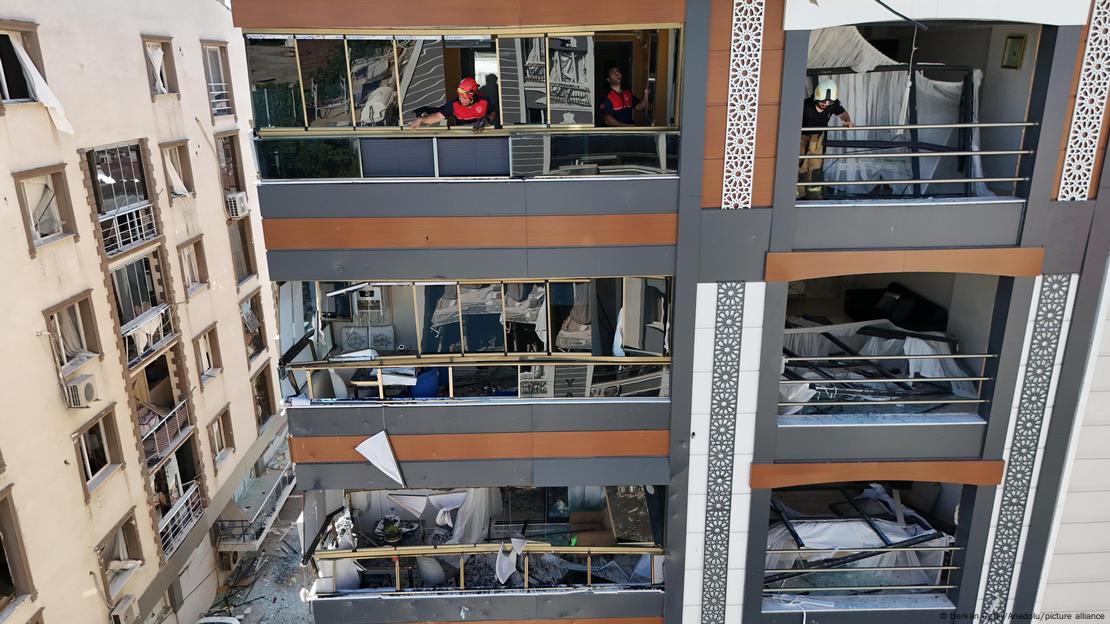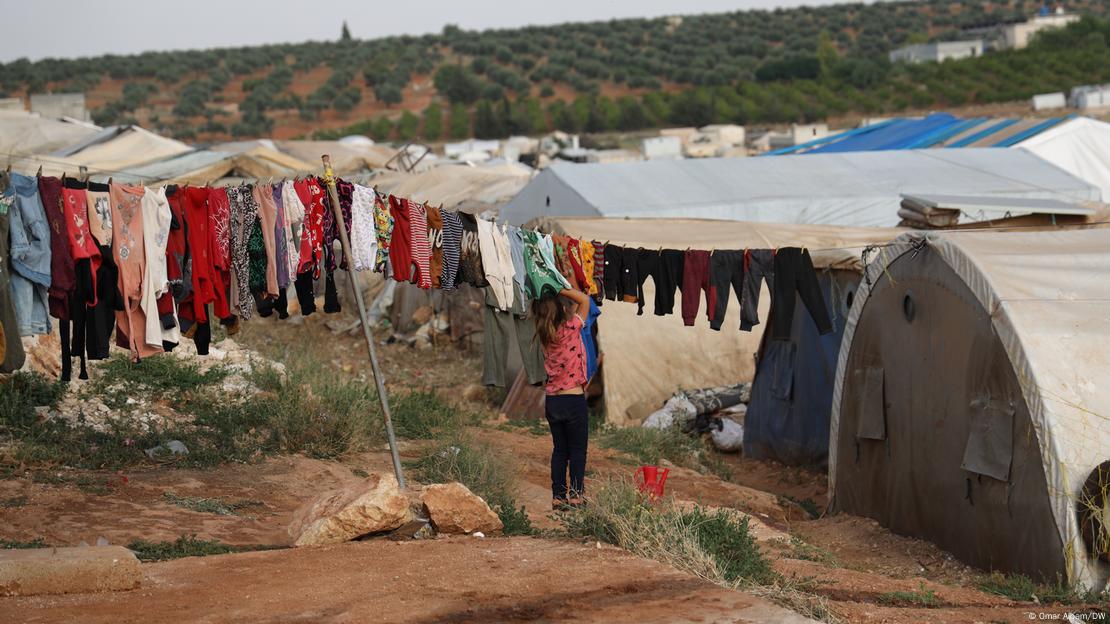By AFP
June 29, 2024

The Edgar Thomson steel plant in Braddock, Pennsylvania, which has been producing since 1875, would go to Nippon Steel under a proposed buyout of United States Steel - Copyright AFP Rebecca DROKE
John BIERS
Nippon Steel’s proposed acquisition of United States Steel has been a source of unease in Pittsburgh, where the metal once dominated the economy and still looms large in the collective psyche.
Critics such as the United Steelworkers (USW) see the transaction as the latest threat to come along in a years-long struggle to keep the industry alive after plant closures in 1970s and 1980s battered the American rustbelt.
“There’s just so much history here and a lot of pride that comes with that,” said the USW’s Bernie Hall, a 4th generation metals worker. “It wouldn’t be western Pennsylvania without steel.”
In December, US Steel sealed a $14.9 billion deal to sell itself to Japan’s Nippon Steel, which has promised investments to keep Pennsylvania factories competitive with foreign producers and newer “mini mills” in the American South that are less taxing on the environment.
But Hall, head of the Pennsylvania chapter for the USW, said the Japanese company had been evasive about specific plans for Pittsburgh-region plants in an area called the Mon Valley, the earliest of which dates to 1875.
Both President Joe Biden and challenger Donald Trump have vowed to annul the deal as the two compete for blue-collar votes, putting the transaction into limbo, probably until after the November election at least.
At stake are the Pittsburgh region’s last remaining steel factories, located just outside the city.
– City transformed –
For most Americans, Pittsburgh remains virtually synonymous with steel, partly owing to the prominence of the Pittsburgh Steelers American football team.
But the complexion of a metropolis once known as the Smoky City changed fundamentally after the last plants shuttered in the 1980s.
Steel “is still part of our identity, but we’re disconnected from that identity,” said former steelworker Edward Stankowski Jr., whose memoir “Memory of Steel” details his exit from the industry with thousands of others in the early 1980s.
Stankowski, whose childhood Pittsburgh home looked out onto steel plants, started in the industry out of high school in the 1970s when many young men viewed the job as a ticket to the middle class, trading hard labor in a hazardous setting for good wages and a solid retirement.
The land where Stankowski’s factory once stood in Pittsburgh’s South Side has been repurposed and now includes apartments named “Hot Metal Flats” and a Cheesecake Factory restaurant.
“I do not miss it,” said Stankowski, who went to university after leaving steel and is now a professor at La Roche University. “I like having clean air. I like having clean water.”
Steel was well suited to western Pennsylvania, a region with waterways and an abundant supply of coal, but “there’s been a fundamental, almost tectonic shift in the geography of steel,” said regional economist Chris Briem of the University of Pittsburgh.
The Mon Valley plants “have been around a long time,” Briem said. “If they don’t get a lot of new reinvestment, they probably won’t be competitive much longer.”
Locals see symbolism in the renaming of US Steel tower downtown as the UPMC building after the region’s biggest employer, the University of Pittsburgh Medical Center.
– Long-term commitment? –
Once owned by Andrew Carnegie, the Edgar Thomson plant in Braddock is one of three western Pennsylvania factories that US Steel manages together with a fourth plant in eastern Pennsylvania in an operation known as “Mon Valley Works.”
Nippon has promised to keep the plants open and invest $1.4 billion in USW-represented facilities through 2026 when the current labor contract expires. The company has also vowed to keep US Steel’s 1,000-worker office in downtown Pittsburgh.
“You cannot tell the story of US Steel without Pennsylvania playing a leading role, and Nippon Steel will keep it that way,” Nippon vice chairman Takahiro Mori wrote in a June 9 op ed in the Pittsburgh Post Gazette.
Nippon has hinted that odds for US approval could improve after November. Backers of the transaction argue that US Steel could be broken up if the deal dies, adding more uncertainty to US Steel’s 3,000 hourly workers in Pennsylvania.
But the USW says Nippon’s plans are vague and give the company an out in a downturn.
“They’re saying they’re going to invest in the plants,” Hall said. “What does that mean?”
Workers want a sign that whoever runs Mon Valley “is interested in running these mills for the long-term and really investing in this community,” Hall said. “That’s exactly what they’re not hearing from either Nippon or US Steel.”
Some Mon Valley workers interviewed by AFP slammed the deal as a money grab by US Steel management, expressing fear about their jobs. But others are open to it.
Alex Barna, a machinist at the West Mifflin plan, described himself as “on the fence” as he weighs his hopes and worries, saying of Nippon, “they might be in it for the long haul.”
Biden, Trump battle for blue-collar voters as steel merger looms
By AFP
June 28, 2024

President Joe Biden in April unveiled steel tariffs at the United Steel Workers Headquarters in Pittsburgh after receiving the union's endorsement the prior month - Copyright AFP Emmanuel DUNAND
John BIERS
Working class voters in Rust Belt cities like Pittsburgh used to favor Democrats overwhelmingly, but years of economic hardship and the rise of social issues favoring Republicans have made them a swing constituency again in 2024.
President Joe Biden has cleared one key hurdle, winning endorsements from union presidents, including the United Steelworkers (USW), a key player in the US Steel takeover battle that has loomed over the 2024 campaign in Pennsylvania.
But just how many rank-and-file workers ignore union chiefs and vote for Donald Trump could have a decisive impact in Pennsylvania, Michigan and Wisconsin, where the margin could be 100,000 votes or fewer.
Biden backers point to the incumbent’s reliable support of organized labor, links to working-class Scranton, Pennsylvania and legislative accomplishments like the 2021 infrastructure law.
“We listened to four years of Donald Trump talking about infrastructure, because there was a lot of lip service,” said steelworker JoJo Burgess in a Biden ad. “Joe Biden delivered on it.”
“Right now, we have the most pro American worker president in office that we’ve ever had,” said Burgess, who is also mayor of Washington, Pennsylvania.
But Rudy Sanetta, a maintenance worker at US Steel, prefers Trump on the economy and because of his stance on gun rights.
“I like him for his resistance to the politicians,” Sanetta said of Trump. “The other guy, I have no confidence.”
Working class voters “are the most pivotal because they’re the ones who have actually demonstrated that they’re willing to select either Trump or Biden,” said Jonathan Cervas, a political scientist at Carnegie Mellon University in Pittsburgh.
Exit polling from Michigan, Wisconsin and Pennsylvania in 2020 suggests the swing to Biden of white working class voters who favored Trump in 2016 “significantly influenced the difference between winning and losing,” according to a May paper by progressive political consultant Mike Lux Media and the organized labor-backed group In Union.
But the paper pointed to recent polling that showed a drop in Biden’s support among union households in Wisconsin and Michigan, while Pennsylvania was unchanged from 2020.
“Democrats need to understand that these working-class Heartland voters have been through a lot of tough times over the last few decades,” said the paper, which urged early outreach from trusted sources that connects with voters’ “real-life experience to counter digital misinformation and social pressure.”
– Eroding support –
Since Trump’s political emergence, there has been considerable debate about the different reasons for the erosion of white working-class support for Democrats.
Some commentators view Trump’s 2016 upset as at least partly a racial backlash after the presidency of Barack Obama and Trump’s embrace of issues like illegal immigration.
Other commentators, like Ruy Teixeira of the American Enterprise Institute, have called the Democratic Party’s progressive positions on issues like police reform and transgender rights alienating to voters who are more culturally conservative.
The 2023 book “Rust Belt Union Blues,” a case study of the Pittsburgh region, points to the after-effects of the 1970s and 1980s industrial downturn that led to huge job losses and shuttered union halls, weakening labor’s bargaining hand with companies.
The downturn also diminished the community role of unions, which once held picnics and other gatherings where members would don colorful pins promoting their locals; this contributed to a solidarity oriented around issues like fair wages and health care.
While unions still hold some activities, many workers who survived industry downsizings now socialize around religion and hunting, where politically-oriented groups lean conservative, according to authors Lainey Newman and Theda Skocpol.
– Pocketbook issues –
Bernie Hall, who leads the USW Pennsylvania district, agreed that many union members have varied affiliations, but said work remains central.
“Especially in western Pennsylvania, you know people really identify with the union,” he said.
Hall, who praised Biden as a “blue-collar” Democrat who has delivered for voters, predicted Biden would win a majority of steelworkers, but acknowledged that Trump holds considerable support.
Some workers turned to Trump after decades of industrial decline to “blow up” the system, Hall said, adding, “I still think there’s an appeal to that for some people.”
Alex Barna, a machinist at US Steel, was a lifelong Democrat who voted for Obama. But since 2016, Barna has voted for Trump twice and will do so again, crediting the former president’s tax cuts with a good economy before Covid-19.
“What affected us was the pocketbook and the pocketbook” was good, said Barna’s wife, Helen, contrasting it with today’s higher inflation.
“A lot of people think of the four years of the mean tweets,” said Helen Barna. “At least we lived better.”
By AFP
June 28, 2024

President Joe Biden in April unveiled steel tariffs at the United Steel Workers Headquarters in Pittsburgh after receiving the union's endorsement the prior month - Copyright AFP Emmanuel DUNAND
John BIERS
Working class voters in Rust Belt cities like Pittsburgh used to favor Democrats overwhelmingly, but years of economic hardship and the rise of social issues favoring Republicans have made them a swing constituency again in 2024.
President Joe Biden has cleared one key hurdle, winning endorsements from union presidents, including the United Steelworkers (USW), a key player in the US Steel takeover battle that has loomed over the 2024 campaign in Pennsylvania.
But just how many rank-and-file workers ignore union chiefs and vote for Donald Trump could have a decisive impact in Pennsylvania, Michigan and Wisconsin, where the margin could be 100,000 votes or fewer.
Biden backers point to the incumbent’s reliable support of organized labor, links to working-class Scranton, Pennsylvania and legislative accomplishments like the 2021 infrastructure law.
“We listened to four years of Donald Trump talking about infrastructure, because there was a lot of lip service,” said steelworker JoJo Burgess in a Biden ad. “Joe Biden delivered on it.”
“Right now, we have the most pro American worker president in office that we’ve ever had,” said Burgess, who is also mayor of Washington, Pennsylvania.
But Rudy Sanetta, a maintenance worker at US Steel, prefers Trump on the economy and because of his stance on gun rights.
“I like him for his resistance to the politicians,” Sanetta said of Trump. “The other guy, I have no confidence.”
Working class voters “are the most pivotal because they’re the ones who have actually demonstrated that they’re willing to select either Trump or Biden,” said Jonathan Cervas, a political scientist at Carnegie Mellon University in Pittsburgh.
Exit polling from Michigan, Wisconsin and Pennsylvania in 2020 suggests the swing to Biden of white working class voters who favored Trump in 2016 “significantly influenced the difference between winning and losing,” according to a May paper by progressive political consultant Mike Lux Media and the organized labor-backed group In Union.
But the paper pointed to recent polling that showed a drop in Biden’s support among union households in Wisconsin and Michigan, while Pennsylvania was unchanged from 2020.
“Democrats need to understand that these working-class Heartland voters have been through a lot of tough times over the last few decades,” said the paper, which urged early outreach from trusted sources that connects with voters’ “real-life experience to counter digital misinformation and social pressure.”
– Eroding support –
Since Trump’s political emergence, there has been considerable debate about the different reasons for the erosion of white working-class support for Democrats.
Some commentators view Trump’s 2016 upset as at least partly a racial backlash after the presidency of Barack Obama and Trump’s embrace of issues like illegal immigration.
Other commentators, like Ruy Teixeira of the American Enterprise Institute, have called the Democratic Party’s progressive positions on issues like police reform and transgender rights alienating to voters who are more culturally conservative.
The 2023 book “Rust Belt Union Blues,” a case study of the Pittsburgh region, points to the after-effects of the 1970s and 1980s industrial downturn that led to huge job losses and shuttered union halls, weakening labor’s bargaining hand with companies.
The downturn also diminished the community role of unions, which once held picnics and other gatherings where members would don colorful pins promoting their locals; this contributed to a solidarity oriented around issues like fair wages and health care.
While unions still hold some activities, many workers who survived industry downsizings now socialize around religion and hunting, where politically-oriented groups lean conservative, according to authors Lainey Newman and Theda Skocpol.
– Pocketbook issues –
Bernie Hall, who leads the USW Pennsylvania district, agreed that many union members have varied affiliations, but said work remains central.
“Especially in western Pennsylvania, you know people really identify with the union,” he said.
Hall, who praised Biden as a “blue-collar” Democrat who has delivered for voters, predicted Biden would win a majority of steelworkers, but acknowledged that Trump holds considerable support.
Some workers turned to Trump after decades of industrial decline to “blow up” the system, Hall said, adding, “I still think there’s an appeal to that for some people.”
Alex Barna, a machinist at US Steel, was a lifelong Democrat who voted for Obama. But since 2016, Barna has voted for Trump twice and will do so again, crediting the former president’s tax cuts with a good economy before Covid-19.
“What affected us was the pocketbook and the pocketbook” was good, said Barna’s wife, Helen, contrasting it with today’s higher inflation.
“A lot of people think of the four years of the mean tweets,” said Helen Barna. “At least we lived better.”





.jpg)



















